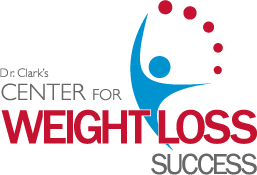What do you know about growth hormone? You might hear about this in the media as anti-aging, this wonderful thing that could keep you young forever. It’s not quite like that. But there is some evidence that potentially can be helpful for certain things. We’re going to talk about those things.
If you look at the literature out there, it suggests a lot of wonderful things that growth hormone can do. There are some wide ranges of potential effects. It can: reduce body fat, increase muscle mass, enhance sexual performance, stronger bones, lower cholesterol, lower blood pressure, faster wound healing, higher energy levels, regrowth of vital organs, restore immune function, hair regrowth, sharper vision, elevated mood, and improved cognition. In theory, it sounds like this does all kinds of stuff. So, is this the Fountain of Youth?
Let’s talk about what this is, where it comes from, and what it can potentially do. Is there some way you can actually utilize this? Growth hormone is secreted by the pituitary gland in your brain. The pituitary gland is a tiny little thing separated into an anterior and posterior gland. There are two different lobes. It’s right there at the base of your brain. It’s controlled by the hypothalamus which sends signals down to the pituitary gland and what it should do. The pituitary gland secretes all kinds of different things. Many of them are hormones. We’re talking mainly about the anterior pituitary today. It helps control how your thyroid works, how your adrenal glands work, how the ovaries work (Follicle stimulating hormone), prolactin, and it secretes growth hormone. It also secretes some other endorphins, which are the feel-good hormones. The anterior pituitary secretes many hormones very important for overall health in addition to growth hormone.
Growth hormone is a peptide that stimulates growth. That means it’s made out of amino acids. It’s a protein. It’s made by the anterior pituitary gland. There are 190 amino acids and it’s a single chain. It’s folded in a particular fashion. A hormone is just a chemical messenger. Once a hormone is secreted (by whatever gland we’re talking about), it passes through the blood stream and sends messages to tissues that have receptors to that hormone. You have to have receptors on the tissue in order to receive the message. Different tissues may receive a slightly different message to do different things. Basically, this is what all hormones do. Growth hormone is abbreviated HGH. It stands for Human Growth Hormone. You’ll often hear about athletes abusing it to improve their athletic performance. It is a prescription drug and can be used legally for deficiency syndromes. If someone truly has a deficiency syndrome in growth hormone, then potentially they can utilize growth hormone to help fix that deficiency syndrome.
You’ll often hear about it in age management. Part of the reason is, as we get older, just like most hormones, we typically don’t get as much out of our hormones. Hormones are not secreted at the same rate and same amount. The theory is that as we get older and growth hormone decreases, we could possibly prevent some of these aging processes by supplementing growth hormone. This is a very controversial subject. Right now we can’t legally use it unless you have a proven deficiency syndrome. What is a proven deficiency syndrome? If you ask many different experts, you’ll get many different opinions. It is a very controversial medication.
How do you know if you have a deficiency syndrome? It’s not easy to measure. That’s where one of the problems comes in. Growth hormone is released in a pulsatile fashion during the early hours of the deepest sleep. The half-life of growth hormones is very short, so you’d have to catch it at the exact time to know whether you’ve got enough or not. It usually happens in your deep sleep. That’s when it’s released the most. Once it’s secreted by the anterior pituitary gland, it’s taken up by the liver. The liver converts it into growth factors. Growth hormone by itself is really difficult to measure. You have to catch it at the right time. The half-life is so short. How do you actually measure it? You can measure it in your urine. If you were to collect a 24-hour urine specimen you can look at how much is secreted into the urine. It can give you an idea of whether a person is secreted enough growth hormone. One of the most important growth factors it’s converted into is insulin-like growth factor 1 (IGF-1). We talk about insulin all the time. Insulin is the antithesis of weight loss. We want to keep insulin levels low. This IGF-1 is something different. It just has a name that begins with insulin. It’s insulin-like because insulin is a growing hormone. With regular insulin it means growing fat. IGF-1 can be a growing factor of growing muscle mass. IGF-1 can be measured because it’s a longer half-life. It will stick around for a longer period of time. If someone were actually had a deficiency syndrome of growth hormone, and we gave them growth hormone, we could get an idea of what the response to that hormone by measuring IGF-1.
Typically growth hormone declines with age. The biggest time to have growth hormone is when we’re growing in adolescence and early adulthood. It declines about 1-3% per year after age 30. It goes down relatively quickly. You’ll see this in Olympians. Typically for men they’re at peak performance in their mid to late 20’s. That’s true with most professional athletes. It happens a little bit sooner with women. The reality is that most of us by the end of our 20’s will start to have a growth hormone decline. We don’t have that same physical performance that we did in our mid to late 20’s. It drops off relatively quickly, but the highest amounts are in the mid to late teens. It can be up to about 3% per year. At some point it will be really low. As we get older we start getting debilitating illnesses. The question is, if we kept supplemented growth hormone higher, could it actually take care of these illnesses of aging?
What are some common signs of low GH? The problem is that most of these signs are really vague because they go along with just feeling bad. The common signs are: premature aging, flabby and obese, stretch marks, droopy eyelids and sagging cheeks, thinning skin, reduced foot arch, thinning muscles of the hands, and prolonged skin folds after pinching skin on the back of the hand. The prolonged skin folds after pinching can also be a sign of dehydration. It could also be a sign of adrenal problems too. Those are really vague things.
What are common complaints with low GH? Again, these complaints tend to be really vague. They don’t mean a whole lot by themselves. The complaints are: poor quality of life, lack of inner peace, anxious, depression, low self-esteem, lack of concentration, lack of self-control, excessive emotions, thinning and weakening of the muscles and skin, exhaustion and poor recovery, feeling of rapidly aging, low libido, and lack of sleep or excessive need for sleep.
What tests can we actually do? GH has a very short ½ life and is released in a pulsatile fashion, so measuring blood levels is impractical and may be meaningless. If someone is measuring your growth hormone and trying to send it off in a lab for bloodwork, it’s pretty much meaningless. IGF-1 can be measured but there is a wide range of “normal.” GH can be measured in 24 hour urine collection, but many labs cannot do this accurately. Almost all of the signs and symptoms of GH deficiency go along with testosterone deficiency. Testosterone deficiency is really common. Both men and women need testosterone. As we age, our testosterone levels drop. Almost every complaint I just mentioned of GH deficiency is actually more likely testosterone deficiency. This might be much more fruitful to measure than to chase GH around.
Let’s say we’re going to treat you for GH deficiency. What are the risks versus the benefits? The benefits are that the complaints we just mentioned could potentially get better. In theory, it’s really safe because we use bio-identical GH. It looks exactly like human GH. If it truly were that unsafe, we would see a lot of younger people with a lot of GH problems because they have really high levels of GH. You don’t want your GH too high either because it could cause Gigantism. Every once in a while you’ll see the 7 foot person that later was diagnosed with a pituitary tumor that secreted GH. Andre the Giant was one of the classic ones. They have a very enlarged jaw and large hands and feet.
Hormone balance is a key concept. We don’t want something out of balance, whether it’s too much or too little. GH has to be given by injection. In theory could we do something to stimulate your own GH? That’s possible in theory. If it’s given by injection, it could take months to notice a clinical improvement. And, this is incredibly expensive. Unless you truly need it and get approval from the insurance company to get treated for this, good luck with getting it paid for! It would be a few thousand dollars every single month. I don’t know many people who are going to do that or want to do that. There’s always the question of because it’s a GH could it actually stimulate tumor growth? If you had some type of tumor, could GH actually make that grow? That’s a real theoretical concern. There’s never going to be a study to look at that. If someone has a tumor we’re not going to start injecting them with GH! It’s been done in animals and was determined it can actually stimulate tumor growth.
Are there certain things that we could do ourselves that would optimize GH release? That would be the optimal thing. What can we do to improve the release of our own GH? We can’t live without it even though our levels go really low with age. Things that improve GH release: strenuous exercise (like High Intensity Interval Resistance Training), deep quality sleep, and protein. These are the best ways. There are a number of potential enhancers. They are: B-vitamins, inositol (like a B-vitamin), minerals (chromium, magnesium, zinc, and iodine. Magnesium also helps with testosterone), amino acids (glutamine 2g/day, carnitine, arginine 7g/day, GABA-all can be found at health food stores), hormones (DHEA, melatonin-helps with sleep-, estradiol, testosterone, thyroid, progesterone), and herbals that can potentially help. Things to avoid: alcohol, caffeine, sugar, and milk products. These are a lot of things we talk about anyway. There are other things that truly inhibit GH release. Carbs-insulin inhibits the release of GH. Stress increases cortisol levels. Cortisol inhibits GH release. If you’re doing things we encourage you to do, you’re probably doing a lot of these things already.
There are some commercial formulas out there. I see this all the time in magazine and newspapers. They say a famous person takes GH and it keeps them young. That’s their secret! What they’re talking about is something that can potentially help increase the release of GH. They tend to be very expensive. They’re usually a mix of amino acids and/or vitamins and herbs. It’s a “proprietary blend.” There are a number of them out there: SeroVital-hgh, Pro-HGH, Symbiotropin, etc.… They’re combinations that, in theory, that will increase the release of GH. Unfortunately there hasn’t been a lot of evidence that they actually work. There have been a couple of small studies, and they do tend to work in the people that don’t need it! They work really well in young adults, but they’re not GH deficient. Let the buyer beware! They tend to be very expensive with limited studies that show that they help at all. But they’re not completely lying either because it can help in the people that don’t need it.
In summary, could this GH be the “fountain on youth?” Unfortunately many of these questions are unanswered. Optimizing your own GH may be helpful in your overall health and weight loss because it does so much that we want to accomplish. For many people the easier answer may be looking at testosterone levels both male and female. There could be something beneficial there for potential weight loss. It’s something to consider and it’s much easier to measure.






 Cat Keller has a wealth of experience in marketing, e-marketing, advertising and customer service and manages our Weight Loss Nutritional Store. She is always planning something fun and exciting. special events, discounts, giveaways – it’s never a dull moment. She is happy to help you with questions you may have regarding our products or services. Cat is a graduate of William & Mary, where she studied Government/Pre-Law and minored in Marketing.
Cat Keller has a wealth of experience in marketing, e-marketing, advertising and customer service and manages our Weight Loss Nutritional Store. She is always planning something fun and exciting. special events, discounts, giveaways – it’s never a dull moment. She is happy to help you with questions you may have regarding our products or services. Cat is a graduate of William & Mary, where she studied Government/Pre-Law and minored in Marketing.